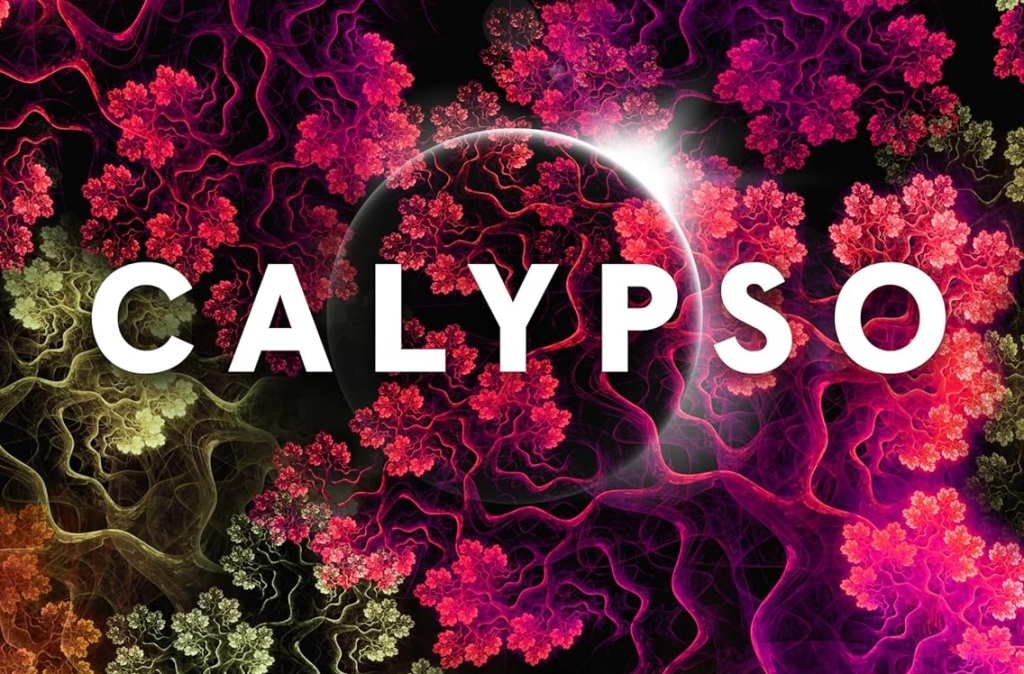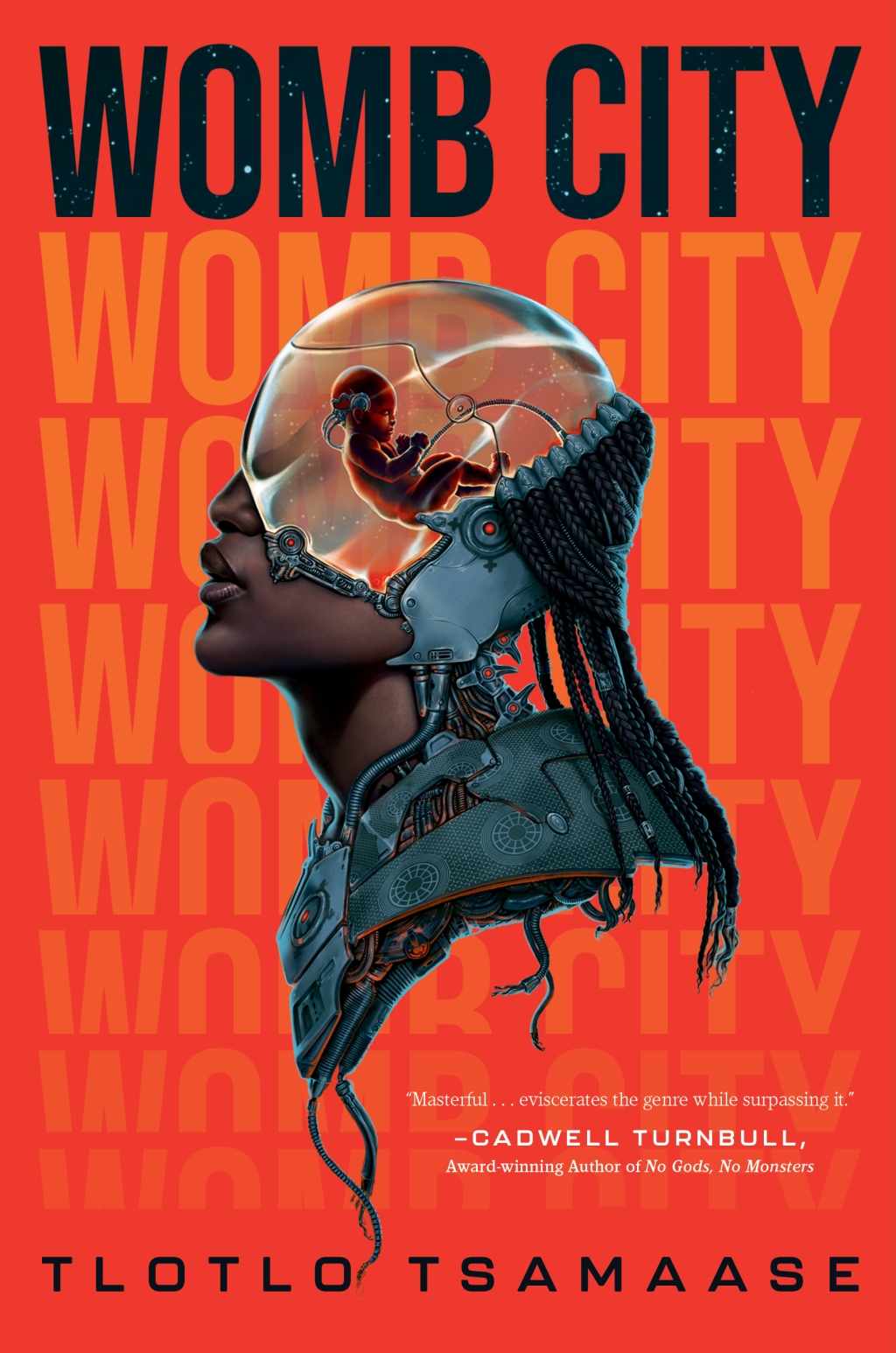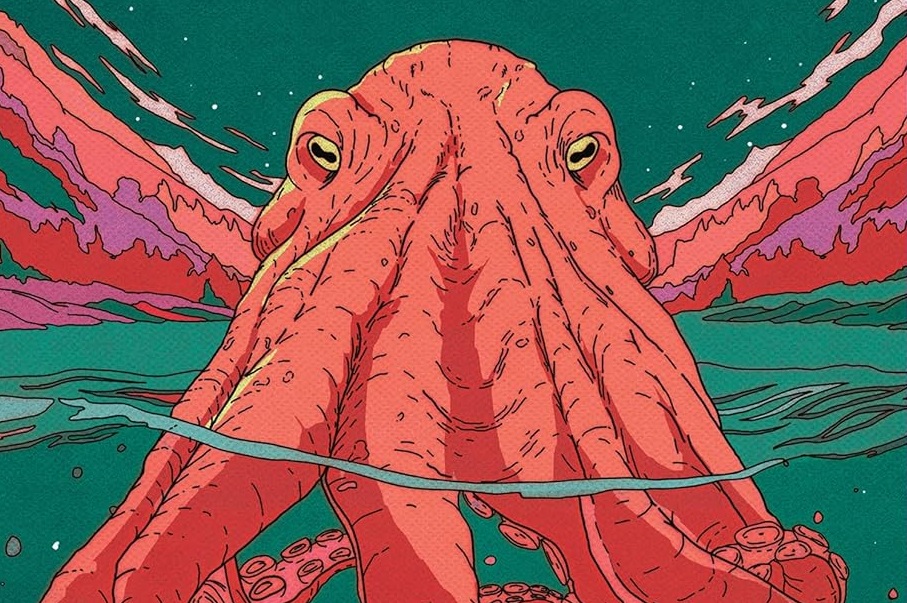Written by Jonathan Thornton
(There will be spoilers ahead)
Calypso is a novel told in epic verse. This is still a relative rarity in science fiction, despite several major works of the past few years – Oliver K. Langmead’s own Dark Star (2015), in which he combines epic poetry, hardboiled noir and science fantasy, and Harry Josephine Giles’ Clarke Award-winning Deep Wheel Orcadia (2021), which tells the story of a space station in Orkney dialect – showing how exciting and vital this form can be. Immediately, Calypso is more formally inventive and ambitious than Dark Star. There are four viewpoint characters – Rochelle, Sigmund, The Herald and Catherine – three of whose voices we are introduced to in Section One. Rochelle, who tells the brief prologue, appears to be our main viewpoint character. She is an engineer who has left behind her two children on Earth to travel in eccentric billionaire Arthur Sigmund’s colony ark ship Calypso. The prologue takes place before the ship leaves, however when Section One opens, Rochelle is waking up from cryostasis in orbit around an alien planet, lightyears from Earth. She meets up with Sigmund and Catherine, a bioengineer in charge of the ship’s hydroponic gardens who is clearly more than she seems, and they explore the surface of the new planet and the interior of the Calypso, which appears to have split into rival factions while Rochelle was asleep.
Rochelle, Sigmund and Catherine all employ different poetic meters to convey their different personalities. Rochelle speaks in 10 beat, 4 line stanzas, which gives her sections an easy flow, highlighting her relatability as a character. Sigmund speaks in 12 beat stanzas that don’t divide into easy stanzas, frequently referring to himself in the third person as he reflects on his storied life, giving him an air of authority but also pomposity. Catherine’s voice is the most unusual, her sections an undulating wave of lines that wax and wane like a living thing, perhaps hinting to the reader that her thought patterns are somewhat alien compared to the human characters, somewhat more than human?
Langmead manages to introduce three of his main characters, the setting and the narrative hook in a relatively short space, highlighting his command of language. Also the pages are illuminated by Darren Kerrigan, who illustrated Dark Star. His illustrations exist on the margins and the section title pages for now, but that will change as we progress throughout the book.
In Sections Two and Three the action really starts to get going, and we find out more about our principle three characters, Rochelle, Catherine and Sigmund. Turns out the situation with the schism is more fraught than Rochelle at first thought – there is an entire splinter colony, living in a city built out of salvaged parts of the Calypso, on one of the planets moons. Rochelle and Catherine see the city’s lights on the moon and against the wishes of Sigmund go off to explore, and meet the people from the other faction, those who have left the Calypso. These people are living in a hostile environment and are angry and resentful towards the crewmembers of the Calypso who decided to stay on board, but the sight of Rochelle’s face stops them in their tracks. Meanwhile the day is saved thanks to Catherine and her special abilities – Catherine, who describes herself as much as a garden as a person, is a bioenhanced being whose fate is to seed the planet below, and she uses her powers to turn the angry colonists into a forest. She and Rochelle return to the Calypso, where Sigmund greets Rochelle with news that a probe from Earth has been found that was launched after their departure and contains the history of her family.
There’s a lot going on in sections two and three. We get Catherine giving Rochelle a cognitive enhancing pill, which helps her to see things from Catherine’s perspective, and Rochelle’s usual meter starts to become more complex like Catherine’s whilst she’s under the effect. There’s an inventive sequence on the planet, where Catherine is able to process two rival colonists’ viewpoints at once, symbolised by two columns of text running alongside each other. And we get more about the social background of Rochelle – the religious upbringing provided by her preacher father, and how that ties in with her squeamishness around bio-enhancements. There’s more of Sigmund, too, and his sense of history and his privileged place in it, that weird combination of toxic futurism and rose-tinted nostalgia that shapes the worldview of so many big tech moguls. There’s some interesting expansion on the lives of Rochelle’s children, and her mixed feelings about having missed her family’s lives. The second section ends with Catherine’s going-away party, as she prepares to leave the ship and complete her destiny on the planet surface.
In Section Four we get the full flowering of Langmead’s formal and textual experimentation. The entire section is given over to Catherine fulfilling her great destiny, which is to seed the entire planet with all forms of life, disintegrating in the process. In gorgeous verse that expands and contracts as Catherine metamorphosises into all the different vegetal, fungal and animal life that will turn the planet into a new Earth, sloughing off parts of herself in the process, Langmead creates a powerful and moving ode to the beauty and diversity of life itself. This is enhanced, as Catherine becomes less and less recognisably human and more truly the planet’s garden, with Darren Kerrigan’s gorgeous illustrations of tree branches, leaves, roots and flowers. As Catherine’s metamorphosis reaches its apotheosis, the plant life literally bursts through the text itself, deforming the pages in its new creation.
Section Five can only be less striking in comparison, yet it still features exciting experiments with form, as we are introduced to the final voice of the novel, the Herald, who speaks for the colonists who have remained on the ship. In text justified to spread evenly to the margins, the Herald’s tone is staid and dignified, giving the air of something recorded for history and posterity as he relates to Rochelle what happened over the years she was asleep that caused the schism between the colonists. Yet even as the Herald strives for impartiality, we can see his explicit bias as someone who speaks for the people who stayed on the Calypso. We also get more of Rochelle’s regrets about leaving her family on Earth behind to live out their lives without her, and Sigmund’s motivations to create a humanity free from the burdens of history.
In Sections Six and Seven, we finally understand the full significance of Sigmund’s plan, and Rochelle’s place within it. Section Six sees Rochelle and Sigmund go to the planet’s surface to deliver the new colonists, who have been kept in suspended animation, and awaken them to the new world. Sigmund’s plan was never for the colonists awake on the ship to live on the planet – it is the people he has grown and kept in suspended in artificial wombs on the ship who will inherit the new Eden. Sigmund’s sections have been building towards one thing – he believes that humanity is tainted by its history, that the weight of human history is a curse that prevents us from bettering ourselves. Rochelle’s job on the ship is to be the voice of dissent – to argue that humanity is enriched by its history, that we can in fact learn from the past and improve ourselves. The new humans on the planets surface awaken and discover themselves and each other, leading to scrapping and fighting as well as wonder and innocence. Rochelle sees this as proof that her perspective is correct – humanity needs some form of guidance and wisdom passed down from our ancestors to teach us that we can be better than our instincts. However Sigmund has already made up his mind – to him, humanity can only ever be a stain, and for him, Rochelle and either of the factions of colonists to influence the new humans on the planet surface would be to invariably corrupt them. So he sets the terrible, final part of his plan in motion, a final way to make sure his precious innocent new race will never be corrupted by human history.
The final section of the book is surprising in just how dark and bleak it gets. Sigmund is a megalomaniac willing to sacrifice everything for his idea of innocence, and there’s not much Rochelle can do to stop him. However, the book doesn’t end in despair – thanks to the lessons and the thought-enhancing drugs provided by her friend Catherine, Rochelle has a chance to survive Armageddon and pass on some of the richness of human history and inheritance to the new humans on the planet surface. Beautifully written, daringly experimental and endlessly surprising, Calypso is a powerful and thought-provoking exploration of the beauty of nature, the fragility of human existence, and the legacies we leave to those who survive us. I know I will be thinking about Langmead’s masterful book long after the last page!




